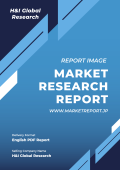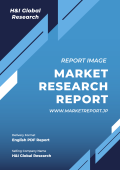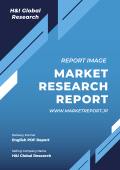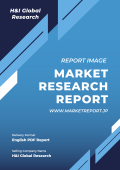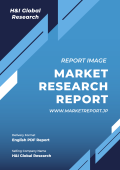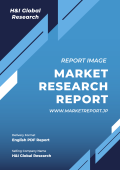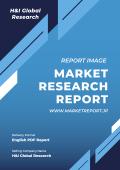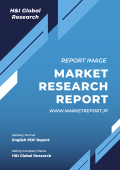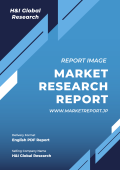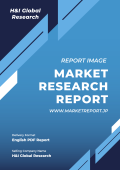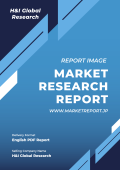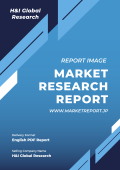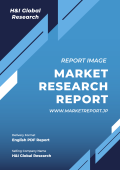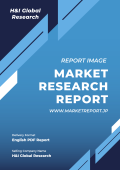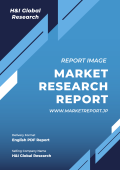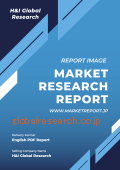| ■ 英語タイトル:Polyolefin Foam Market - Growth, Trends, Covid-19 Impact, and Forecasts (2023 - 2028)
|
 | ■ 発行会社/調査会社:Mordor Intelligence
■ 商品コード:MOR23MR079
■ 発行日:2023年1月23日
■ 調査対象地域:中国、インド、日本、韓国、アメリカ、カナダ、メキシコ、ドイツ、イギリス、イタリア、フランス、ブラジル、アルゼンチン、サウジアラビア、南アフリカ
■ 産業分野:化学・材料
■ ページ数:120
■ レポート言語:英語
■ レポート形式:PDF
■ 納品方式:Eメール(受注後2-3営業日)
|
■ 販売価格オプション
(消費税別)
※販売価格オプションの説明はこちらで、ご購入に関する詳細案内はご利用ガイドでご確認いただけます。
※お支払金額は「換算金額(日本円)+消費税+配送料(Eメール納品は無料)」です。
※Eメールによる納品の場合、通常ご注文当日~2日以内に納品致します。
※レポート納品後、納品日+5日以内に請求書を発行・送付致します。(請求書発行日より2ヶ月以内の銀行振込条件、カード払いも可能)
※Mordor Intelligence社の概要及び新刊レポートはこちらでご確認いただけます。
*** レポート概要(サマリー)***Mordor Intelligence社は、世界のポリオレフィンフォーム市場規模が予測期間中(2022年~2027年)、年平均5%で成長すると見込んでいます。当調査レポートではポリオレフィンフォームの世界市場について調査・分析を行い、イントロダクション、調査手法、エグゼクティブサマリー、市場動向、フォーム種類別(ポリエチレン(PE)、ポリプロピレン(PP)、エチレンビニルアセテート(EVA))分析、産業別(自動車、建設、包装、履物、その他)分析、地域別(中国、インド、日本、韓国、アメリカ、カナダ、メキシコ、ドイツ、イギリス、イタリア、フランス、ブラジル、アルゼンチン、サウジアラビア、南アフリカ)分析、競争状況、市場機会・将来動向などの項目をまとめています。また、市場調査の対象企業には、ARMACELL、Asahi Kasei Corporation、BASF SE、Borealis AG.、Dow、Exxon Mobil Corporation、Finproject Group、Hanwha Solutions Chemical Division Corporationなどが含まれています。
・イントロダクション
・調査手法
・エグゼクティブサマリー
・市場動向
・世界のポリオレフィンフォーム市場規模:フォーム種類別
- ポリエチレン(PE)における市場規模
- ポリプロピレン(PP)における市場規模
- エチレンビニルアセテート(EVA)における市場規模
・世界のポリオレフィンフォーム市場規模:産業別
- 自動車における市場規模
- 建設における市場規模
- 包装における市場規模
- 履物における市場規模
- その他産業における市場規模
・世界のポリオレフィンフォーム市場規模:地域別
- アジア太平洋のポリオレフィンフォーム市場規模
中国のポリオレフィンフォーム市場規模
インドのポリオレフィンフォーム市場規模
日本のポリオレフィンフォーム市場規模
…
- 北米のポリオレフィンフォーム市場規模
アメリカのポリオレフィンフォーム市場規模
カナダのポリオレフィンフォーム市場規模
メキシコのポリオレフィンフォーム市場規模
…
- ヨーロッパのポリオレフィンフォーム市場規模
ドイツのポリオレフィンフォーム市場規模
イギリスのポリオレフィンフォーム市場規模
イタリアのポリオレフィンフォーム市場規模
…
- 南米/中東のポリオレフィンフォーム市場規模
ブラジルのポリオレフィンフォーム市場規模
アルゼンチンのポリオレフィンフォーム市場規模
サウジアラビアのポリオレフィンフォーム市場規模
…
・競争状況
・市場機会・将来動向 |
The Polyolefin Foam market is projected to register a CAGR of around 5% during the forecast period (2022-2027).
COVID-19 negatively impacted the market in 2020. The COVID-19 pandemic affected the polyolefin foam market because of supply chain and market disruption. During the pandemic, many factories producing polyolefin foam were shut down. There was a change in priority to the health sector; sectors like automotive, construction, footwear, and bedding & furniture were on temporary hold. In construction, polyolefin foam is used as joint filler, backup material, and roof insulation material. It is also used in automobiles as ceiling material and sound-absorbing material.
Key Highlights
- Over the short term, rising demand for polyolefin foam for application in the automotive industry and increasing consumption in the packaging industry are some of the driving factors stimulating the market demand.
- Increasing demand for other polymer foams like polyurethane and polystyrene is expected to hinder the market growth.
- Increasing demand for lightweight applications in various industries and growing demand for bio-based polyols will likely create opportunities for the market in the coming years.
- The Asia-Pacific region is expected to dominate the market and will also witness the highest CAGR during the forecast period.
Polyolefin Foam Market Trends
Increasing Usage in the Automotive Industry
Polyolefin foam is majorly used as ceiling and sound-absorbing material in the automotive industry. Polyolefin foams are also used in exterior, interior, and under-the-bonnet applications in automotive, such as bumpers, body panels, trims, dashboards, door claddings, climate control, and cooling systems air intake manifolds, and battery cases.
Globally the automotive industry is constantly trying to lower the average weight as the lower weight will lead to improved fuel consumption and better performance. Polyolefin foams can be used in both commercial and small private vehicles and in large quantities in buses and coaches and can help reduce the average weight.
According to OICA, in 2021, global motor vehicle production increased from 7,77,11,725 units in 2020 to about 8,01,45,988 in 2021, an increase of more than 3%. In 2021 China, the United States, Japan, India, South Korea, Germany, and Mexico were the top manufacturer of the vehicle globally.
According to EV Volumes, global EV sales reached 6.75 million units in 2021, registering a growth of 108% compared to 3.24 million sales in 2020. Also, globally the share of EVs in sales of light vehicles was 8.3% in 2021 compared to 4.2% in 2020.
Owing to all these factors, the polyolefin foam market will likely grow globally during the forecast period.
Asia-Pacific Region to Dominate the Market
The Asia-Pacific region is expected to dominate the market. In the region, China is the largest economy in terms of GDP. China and India are among the fastest emerging economies in the world.
Asia-Pacific region dominated the global market share. One of the major factors driving the demand for the polyolefin foam market in the Asia-Pacific region is increasing automotive production in countries like China, Japan, and India, which is expected to drive the demand for polyolefin foam in the region.
China, India, the United States, and Indonesia are expected to record significant growth in the construction industry in the coming years. China alone will account for 26.1% of global growth. India is expected to account for 14.1% and the US for 11.1%, while Indonesia is expected to account for 7.0% of global growth, which in turn will be expected to drive the demand for polyolefin foam in the region due to the application of polyolefin foams in building and construction industry.
As per the EV Volumes, In 2021, out of a total of 6.75 million EVs sold, around 3.4 million, i.e., around 50%, were sold to mainland China.
China continues to be the world’s largest automotive producer. China is focusing on increasing the production and sale of electric vehicles in the country. The economic shifts and the U.S.-China trade war affected the Chinese automotive industry.
In India, 4,399,112 vehicles were produced in 2021, which is 30% more than that of 2020. Japan is the third-largest automotive producer in the world, producing 7,846,955 vehicles in 2021, which is expected to increase further in 2022.
Due to all such factors, the region’s polyolefin foam market is expected to have a steady growth during the forecast period.
Polyolefin Foam Market Competitor Analysis
The Global Polyolefin Foam Market is partially consolidated in nature. Some of the major players in the market include (not in any particular order) TORAY INDUSTRIES, INC, BASF SE, JSP, Hanwha Solutions Chemical Division Corporation, and SABIC.
Additional Benefits:
- The market estimate (ME) sheet in Excel format
- 3 months of analyst support
The Polyolefin Foam market is projected to register a CAGR of around 5% during the forecast period (2022-2027).
COVID-19 negatively impacted the market in 2020. The COVID-19 pandemic affected the polyolefin foam market because of supply chain and market disruption. During the pandemic, many factories producing polyolefin foam were shut down. There was a change in priority to the health sector; sectors like automotive, construction, footwear, and bedding & furniture were on temporary hold. In construction, polyolefin foam is used as joint filler, backup material, and roof insulation material. It is also used in automobiles as ceiling material and sound-absorbing material.
Key Highlights
- Over the short term, rising demand for polyolefin foam for application in the automotive industry and increasing consumption in the packaging industry are some of the driving factors stimulating the market demand.
- Increasing demand for other polymer foams like polyurethane and polystyrene is expected to hinder the market growth.
- Increasing demand for lightweight applications in various industries and growing demand for bio-based polyols will likely create opportunities for the market in the coming years.
- The Asia-Pacific region is expected to dominate the market and will also witness the highest CAGR during the forecast period.
Polyolefin Foam Market Trends
Increasing Usage in the Automotive Industry
Polyolefin foam is majorly used as ceiling and sound-absorbing material in the automotive industry. Polyolefin foams are also used in exterior, interior, and under-the-bonnet applications in automotive, such as bumpers, body panels, trims, dashboards, door claddings, climate control, and cooling systems air intake manifolds, and battery cases.
Globally the automotive industry is constantly trying to lower the average weight as the lower weight will lead to improved fuel consumption and better performance. Polyolefin foams can be used in both commercial and small private vehicles and in large quantities in buses and coaches and can help reduce the average weight.
According to OICA, in 2021, global motor vehicle production increased from 7,77,11,725 units in 2020 to about 8,01,45,988 in 2021, an increase of more than 3%. In 2021 China, the United States, Japan, India, South Korea, Germany, and Mexico were the top manufacturer of the vehicle globally.
According to EV Volumes, global EV sales reached 6.75 million units in 2021, registering a growth of 108% compared to 3.24 million sales in 2020. Also, globally the share of EVs in sales of light vehicles was 8.3% in 2021 compared to 4.2% in 2020.
Owing to all these factors, the polyolefin foam market will likely grow globally during the forecast period.
Asia-Pacific Region to Dominate the Market
The Asia-Pacific region is expected to dominate the market. In the region, China is the largest economy in terms of GDP. China and India are among the fastest emerging economies in the world.
Asia-Pacific region dominated the global market share. One of the major factors driving the demand for the polyolefin foam market in the Asia-Pacific region is increasing automotive production in countries like China, Japan, and India, which is expected to drive the demand for polyolefin foam in the region.
China, India, the United States, and Indonesia are expected to record significant growth in the construction industry in the coming years. China alone will account for 26.1% of global growth. India is expected to account for 14.1% and the US for 11.1%, while Indonesia is expected to account for 7.0% of global growth, which in turn will be expected to drive the demand for polyolefin foam in the region due to the application of polyolefin foams in building and construction industry.
As per the EV Volumes, In 2021, out of a total of 6.75 million EVs sold, around 3.4 million, i.e., around 50%, were sold to mainland China.
China continues to be the world’s largest automotive producer. China is focusing on increasing the production and sale of electric vehicles in the country. The economic shifts and the U.S.-China trade war affected the Chinese automotive industry.
In India, 4,399,112 vehicles were produced in 2021, which is 30% more than that of 2020. Japan is the third-largest automotive producer in the world, producing 7,846,955 vehicles in 2021, which is expected to increase further in 2022.
Due to all such factors, the region’s polyolefin foam market is expected to have a steady growth during the forecast period.
Polyolefin Foam Market Competitor Analysis
The Global Polyolefin Foam Market is partially consolidated in nature. Some of the major players in the market include (not in any particular order) TORAY INDUSTRIES, INC, BASF SE, JSP, Hanwha Solutions Chemical Division Corporation, and SABIC.
Additional Benefits:
- The market estimate (ME) sheet in Excel format
- 3 months of analyst support
*** 免責事項 ***https://www.globalresearch.co.jp/disclaimer/


